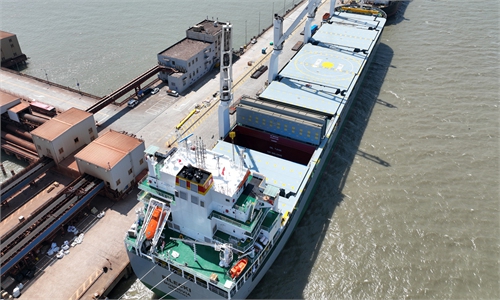China’s industrial added value up 3.4% in H1, marking stable recovery as epidemic eased

Workers at an auto factory in Sanming, East China's Fujian Province Photo: cnsphoto
The Ministry of Industry and Information Technology (MIIT) on Tuesday announced China's industrial development data for the first half of 2022, with added value up 3.4 percent year-on-year, marking the stable recovery of the industrial sector as the COVID-19 resurgence is largely contained.
The added value of the manufacturing sector over a designated scale was up 2.8 percent year-on-year, accounting for 28.8 percent of overall GDP, and the investment value in the sector rose 10.4 percent, the MIIT revealed.
The figures showed China's great efforts in keeping the economy on track amid various difficulties, including COVID-19 rebounds in major cities and geopolitical risks, Dong Dengxin, director of the Finance and Securities Institute of the Wuhan University of Science and Technology, told the Global Times on Tuesday.
Tian Yulong, a spokesperson of the MIIT, stated at a press conference that industrial added value in 25 provinces expanded in the first half. East China saw a 2.2 percent increase, while growth was 7.3 percent in both middle and western China.
The added value of 33 sectors in 41 categories grew. Equipment manufacturing expanded by 4.3 percent, electronic manufacturing rose by 10.2 percent and consumer goods manufacturing was up 3.5 percent, said Tian.
Auto output in June rose 28.2 percent, turning positive after a 46.1 percent decrease in April. Passenger vehicle output increased 43.6 percent, and new-energy vehicle (NEV) output and sales both expanded by 130 percent.
"China's industry growth slowed down in 2022 due to multiple external factors, such as the relentless crackdown by the US, and low overseas demand due to the still spreading COVID-19 pandemic, which added more challenges to domestic manufacturing enterprises," said Dong.
Dong said that the current growth rate showed that the overall recovery of the industrial sector is stable and in line with market expectations, predicting a faster recovery pace in the second half of 2022.
Tian said the MIIT and other authorities may extend the purchase tax exemption for NEVs. The whitelist mechanism will be implemented in more areas and key industries, including vehicle manufacturing and integrated circuits.
In the 5G network sector, the MIIT said that 1.854 million base stations were rolled out and operational as of now, and the number of 5G mobile phone users reached 455 million this month. The MIIT vowed to deploy 600,000 5G base stations within 2022, bringing the overall number to more than 2 million.
"COVID-19 has had a considerable impact on China's economy in the first half of 2022 but there's still growth, and I believe the regulators will learn from the experience of fighting against the virus and making precise measures, which is likely to secure higher economic development in the second half," said Dong.

